On Reaching the Worldwide Production Milestone of 100 Million Super Cubs — by Hiroshi Nakabe
- 12/02/2018
197 views

Held at Honda’s Kumamoto Factory last October 19, 2017 this ceremony marked the worldwide production of the Super Cub series’ 100 millionth machine.
In a heartwarming scene so typical of Honda, Takahiro Hachigo, Honda’s eighth president, appeared before the large gathering of employees riding one of the company’s latest Super Cubs. However, the high point of the event was clearly the company’s declaration of its commitment to maintaining the highest quality while promoting a safe work environment, which was made in response to a statement delivered by a representative of the company’s younger associates expressing their joy at reaching the 100 million unit production mark.
It goes without saying that a grand total of 100 million units for a single series of motorcycles represents a world record. This stupendous number was reached over the course of 59 years from the Super Cub’s first launch in 1958. Yet this record figure is continuously being updated. One hundred million is simply an incredible milestone on the way to still greater achievments. Regarding just how high that future number might grow to be, President Hachigo exclaimed that “we will next be working to achieve a target of 200 million units,” but in truth no one knows at this point in time.
All the people present at this ceremony fully understood the historic significance of the occasion, and the reality of over 100 million Super Cubs throughout the world playing such an integral role in people’s lives for over half a century. However, this reality remains alive and ongoing, so it seems that Honda is destined to continue producing Super Cubs as a rugged, fuel-efficient, and fun to ride mode of transportation that will continue to evolve as it helps in building a new future. The weight of this reality, and of that expanding future, gave the assembled Honda associates at the ceremony a renewed sense of quiet resolve.
What’s interesting to note here is how publicity over the Super Cub’s record-setting number was kept to such a low level. Perhaps it doesn’t register as such a big deal that a motorcycle made for ordinary people, designed generations ago by a young team of Japanese engineers, and in continuous production by a single Japanese manufacturer, has reached such a momentous number.
A commemorative ceremony was held at the Kumamoto Factory on October 19, 2017 to mark the worldwide production of the 100 millionth Super Cub.
Surely one reason for this could be the degree to which the Super Cub has become a big part of everyday life and culture in Japan. Whatever village or town one visits in Japan, you’ll hear people mention that their family or neighbors have or had one. Super Cubs are still seen being used every day for delivering the mail or newspapers, or parked in front of stores for delivering goods, and even used as basic transportation by many employees of banks and large businesses. Super Cubs are, in fact, such an integral part of everyday life that they fail to attract any attention. They can be found anywhere you go in Japan and many other countries, inconspicuous and unassuming. Maybe that’s why the 100 million number is hardly noticed.
Perhaps it’s like the reaction friends from childhood or family members might have to someone they know so well becoming a world champion: “Oh, old so-and-so?” Of course they think it’s great, but their familiarity tends to lessen the impact. In a way, the Super Cub is very much like this.
We can attribute this familiarity to the way the Super Cub has become such an integral part of people’s lives as basic mobility for the masses. Perhaps this suits the Super Cub’s style: it’s endearing appearance and durable functionality, not to mention its complete lack of anything that could be described as aggressive.
Super Cub catalogs often featured scenes depicting everyday working people.
All the same, ‘100 million motorcycles in 59 years’ is still a number to be reckoned with. There are, of course, many mass-produced goods like mobile phones, game consoles or books that are regularly produced in numbers much higher than the Super Cub. But if compared by product category and price bracket, there is no doubt that this series has etched its name deeply into contemporary history. This is further highlighted by the fact that in 2018 the Super Cub will be celebrating 60 years of production as one of the world’s most incredible long-sellers, making the transition from the latter half of the 20th century to well into the 21st.
Honda may have downplayed this achievement by simply stating ‘100 million users,’ but considering the fact that in many countries a single Super Cub serves as the sole means of transportation for entire families, the actual number of people who have ridden on Super Cubs must be several hundred million people. Though based on the simplest of calculations, it could easily be said that a significant percentage of the world’s current population of 7.4 billion people have ridden a Super Cub. That astounding number of people is even more amazing when we consider that the Super Cub is not a bus or a train, but simply one small piece of personal transportation.
Super Cub production began in 1958 at the Yamato Factory (left), then shifted in 1960 to the Suzuka Factory (upper right; photo taken around 1991). Overseas production commenced in 1961. From 2012, only the Little Cub was in production in Japan. However, Super Cub production restarted again at the Kumamoto Factory in 2017 (lower right).
One reason is surely that the Super Cub is a motorcycle that represents the very lowest price bracket. In business terminology, this is often referred to as a ‘bottom line product.’ But for ordinary people, the Super Cub offers low-priced access to the exhilarating feeling of liberation that mobility provides.
Still, acknowledgment must not only be given to its low price, but also to the Super Cub’s high intrinsic value, as well as its ease of use. The essence of Super Cub styling is its easy-on, easy-off step-through configuration coupled with its rugged, large-diameter wheels and tires, which were designed from the start to better cope with bad roads. Add to that the Super Cub’s highly durable, breakdown-resistant mechanical design, and what it all adds up to is a motorcycle that can be ridden anywhere, whatever your lifestyle or whatever the road conditions. Of course it can also carry things as well as people.
But the most important point to remember is the excellent ride that the Super Cub offers. This motorcycle has an amazingly nimble and easily controlled feel that gets better the more you ride it. Without the simple joy it provides as a machine to be ridden, the Super Cub would surely never have made it to an astounding 100 million units in the 59 years it’s been in production. However affordably priced and handy a bike might be, if it rides poorly, its popularity will eventually wane. Just as luxury cars may offer their own special upscale means of travel, so too does this ordinary people’s vehicle have its own nimble response and easy operation that has come to be loved by its owners.
The Super Cub series is sold in 160 countries worldwide, traversing over 80% of the world’s roads day in and day out. As many of these countries lack well-developed infrastructure or public transportation systems, the benefits afforded by a single motorized bike to people’s day-to-day lives are immeasurable.
The Super Cub offers a way for people to get around in their daily lives, to fetch food, fuel or water, or to carry people in cases of medical or other emergencies. Having one’s own personal transportation allows people to enjoy their own time, or even travel freely to visit the ones they love. Having the freedom to go where you want, when you want, and under your own power provides a special kind of joy to people’s lives.
The 100 million motorcycles of the Super Cub series stand as the awe-inspiring result of the years of support they have provided to the lives of ordinary people, helping them in ways large and small to achieve their dreams.
Special Edition — The 100 Million Unit Production MilestoneSpecial Edition — The 100 Million Unit Production MilestoneSpecial Edition
The 100 Million Unit Production Milestone
The Super Cub continues to be ridden all over the world. At the ceremony, models produced in Vietnam, Thailand, and Brazil appeared on stage, showing off each country’s own distinctive style.
So one can’t help but wonder whether Soichiro Honda and Takeo Fujisawa—respectively heading up the design and development of the Super Cub series—could ever have imagined at the motorcycle’s earliest stages that it would reach 100 million units in sales. Perhaps these two gifted men, who founded Honda and built it up from a small-scale factory to a global corporation in just 25 years, couldn’t possibly have imagine such a development, but were confident of it just the same.
Still, I’m sure that they would never sit back, resting on their laurels, to boast of their great achievement. Instead, they’d probably be pushing ahead with the development of some new form of transportation for ordinary people that would be even more useful and enjoyable than the Super Cub series. Only people with a philosophy like that could have come up with a 100 million strong Super Cub series in the first place.
Even now, the vast majority of the world’s people have yet to enjoy the benefits of personal mobility afforded by a motorized bike. In the years ahead, the steadily evolving Super Cub series has the potential to act as an important assist to these people’s lives, providing them with new worlds of fulfillment and joy. Just how far the Super Cub series will continue to expand its production numbers depends on this vast untapped pool of several billion people who surely dream of having their own personal means of travel.
Soichiro Honda and Takeo Fujisawa. This unique combination of personalities was the key to the Super Cub becoming a bike loved round the world.
Hiroshi Nakabe
Born in 1953, Hiroshi Nakabe is a non-fiction writer whose works include Teihon Honda Soichiro Den (An Authorized Biography of Soichiro Honda), Inochi no Idenshi (The Vital Gene) and Enjō (Rising From the Flames) etc. He has been covering Super Cubs for twenty years. Nakabe is also a part-time lecturer at the Japan Institute of the Moving Image.
Original Source[ HONDA World ]























![20171226 sagawa 02 680x454 150x112 - [Webike motoreport] Kawasaki Ninja400 Test ride](https://gc-img.webike.net/@wid-news/wp-content/uploads/2018/02/20171226_sagawa_02-680x454-150x112.jpg)
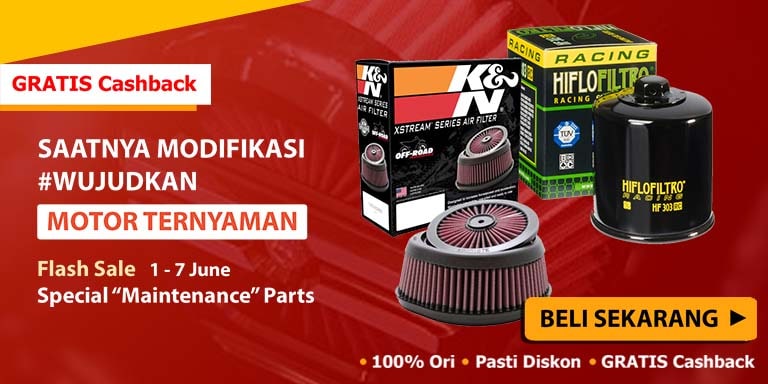

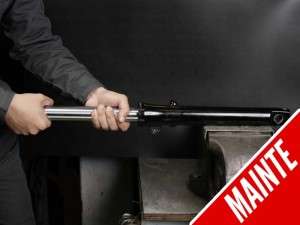
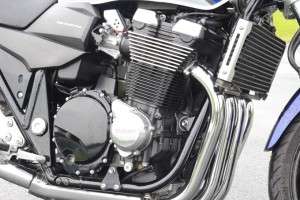
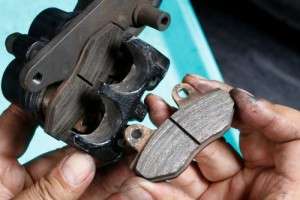

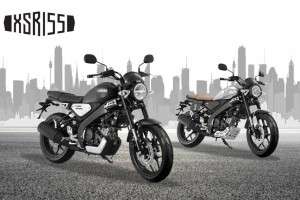
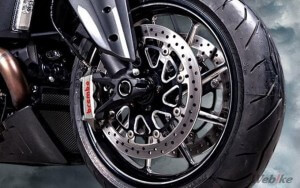
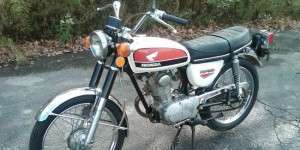









 Brake Disc](http://global-fs.webike-cdn.net/catalogue/images/84812/DIA320_BRAKE_DISC_KIT_KAWASAKI_01_s.jpg)
